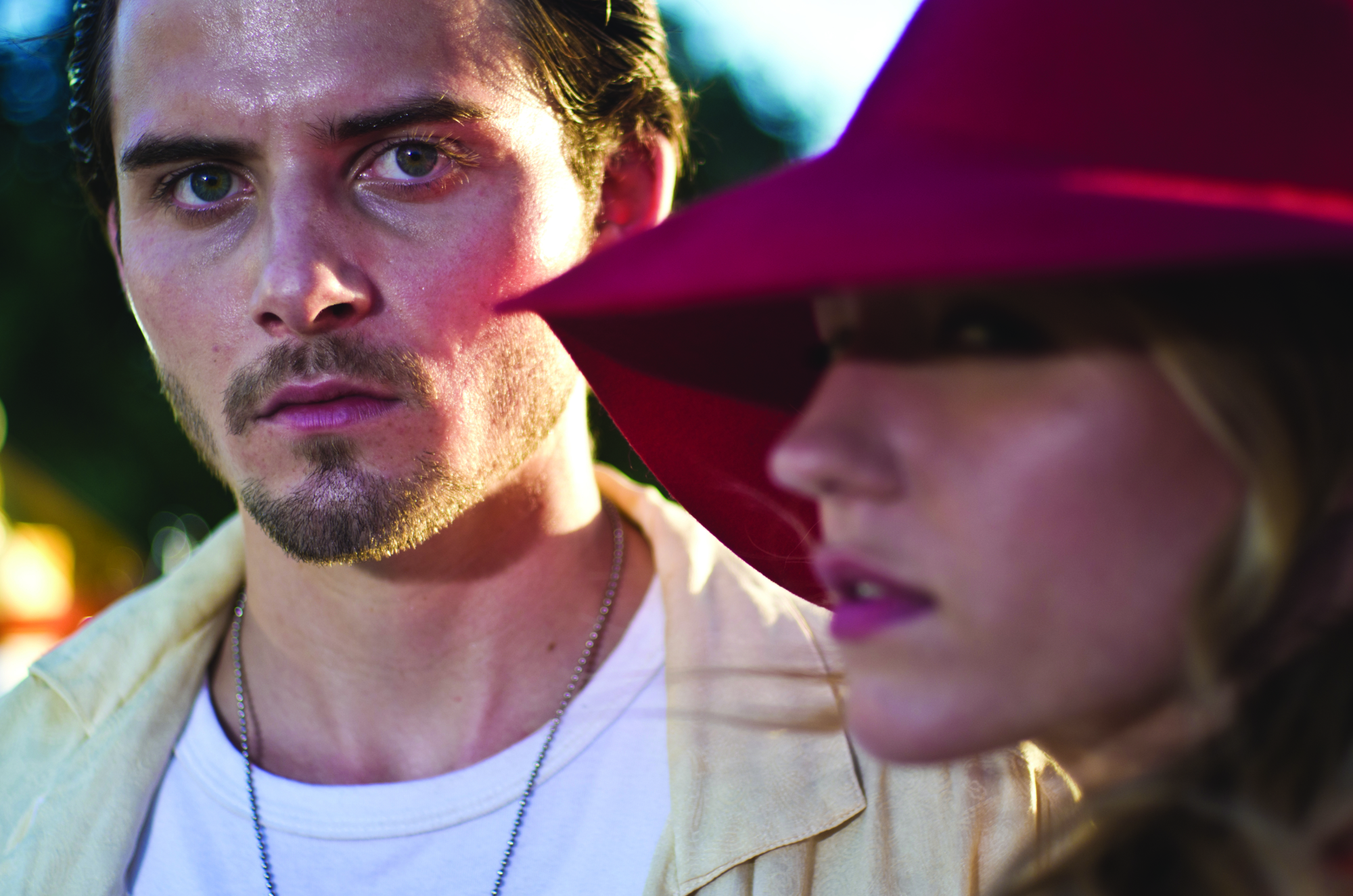You can certainly feel the heat, sweat and blood seeping through Burning Kiss (2018), writer/director Robbie Studsor’s sexy, surreal self-pegged ‘summer noir’. For a low-budget independent feature debut shot in Perth, it’s an impressive feat. Essentially a three-hander, the film stars Liam Graham as an enigmatic stranger who enters the lives of – and complicates the relationship between – a thuggish father and his daughter.
I speak to Studsor about playing with the traditions of film noir and creatively fusing a multitude of other art-cinema influences to create an intoxicatingly unconventional Aussie crime cocktail.
Oliver Pfeiffer: How did the story of Burning Kiss come about?
Robbie Studsor: I wanted to do something where someone is trying to create a story – almost like a whodunnit, except you know ‘whodunnit’ [right from] the start, then they kind of invent the story as they go along. That was the first thing I was interested in, and that’s what happens in the film: the father character, Edmond [Richard Mellick], kind of creates a fake story to try and catch Max [Graham], who we already know is the perpetrator – so it’s sort of reverse-engineering, in a way. That intrigued me. There’s a film called Investigation of a Citizen Above Suspicion [Elio Petri, 1970] about cops mishandling a case, which influenced me.
From that grew the idea of Max being the prisoner in the house, and the kind of erotic or repressed thing happening between him and Edmond’s daughter, Charlotte [Alyson Walker]. It was kind of a Buñuelian[1]Referring to filmmaker Luis Buñuel. thing: the idea of [characters] being trapped somewhere like that, with Georges Bataille’s book Story of the Eye[2]Narrated retrospectively by an unnamed young man, Bataille’s 1928 novella concerns the unconventional sexual exploits of love-struck teenagers. […] fused into it. It’s almost like a midnight movie,[3]For a primer on the midnight movie, see Neil Strauss, ‘It Must Be Midnight and Must Be Weird’, The New York Times, 7 July 1995, <https://www.nytimes.com/1995/07/07/movies/it-must-be-midnight-and-must-be-weird.html>, accessed 21 May 2019. and so I tried to tie into that tradition in a way as well.
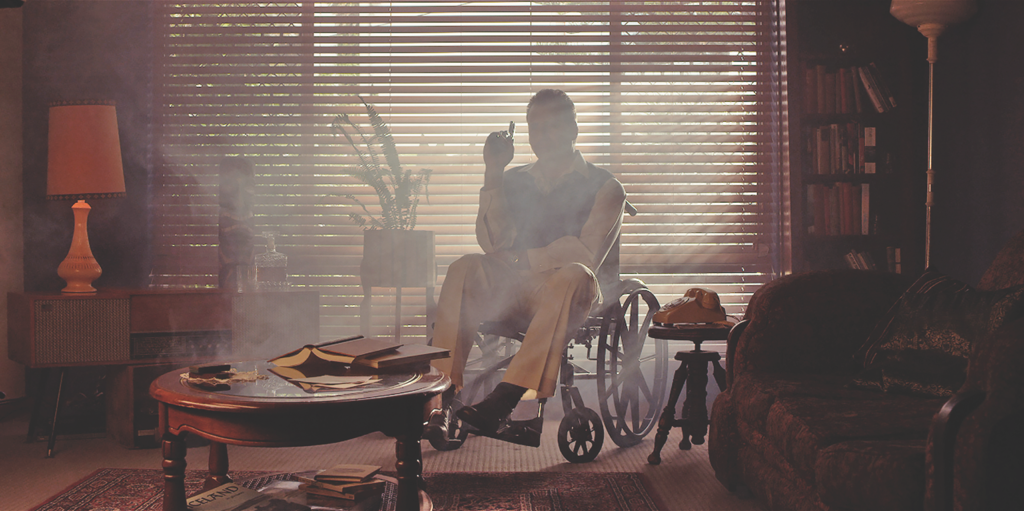
Crime films are common in Australian cinema; however, Burning Kiss appears to be more geared towards stylised neo-noir. Is this point of differentiation something that you set out to have?
Australian crime films definitely favour the ‘gritty’ expression of noir. However, for Burning Kiss, I focused on the more sultry, ‘hot’ expression of the genre, which perhaps originates from the west-coast / Californian film noir tradition. I feel this ‘summer noir’ style was picked up by the European neo-noir thrillers of the 1960s and 1970s, which often involved murder plots mixed with characters relaxing around pools and vacationing […] It’s a tradition that possibly started with Purple Noon [René Clément, 1960] in Europe and goes all the way up to things like Sexy Beast [Jonathan Glazer, 2000]. In this world […] the ocean – and, in particular, the swimming pool – symbolises a liminal space where fantasies, sexual or violent, can be realised. This is something I tried to present in Burning Kiss.
‘In this world … the ocean – and, in particular, the swimming pool – symbolises a liminal space where fantasies, sexual or violent, can be realised. This is something I tried to present in Burning Kiss.’
—Robbie Studsor
That being said, I wanted to approach the film from almost a playful, ‘outsider art’ way in the tradition of [experimental filmmaker] Jeff Keen or [underground video artists] the Kuchar Brothers, rather than feeling tied to any specific rules of noir or neo-noir.
I guess this approach to noir is quite freeing, from both artistic and story standpoints.
Noir is such an amazing style to explore, as it has become a wonderful shorthand for something very direct and affecting that’s both immediately identifiable and difficult to describe. It has completely transcended its history [of comprising] film adaptations of pulp literature, and is found everywhere from photography, visual art, architecture, music, fashion and so on as a powerful existential expression of something to do with sex and death.
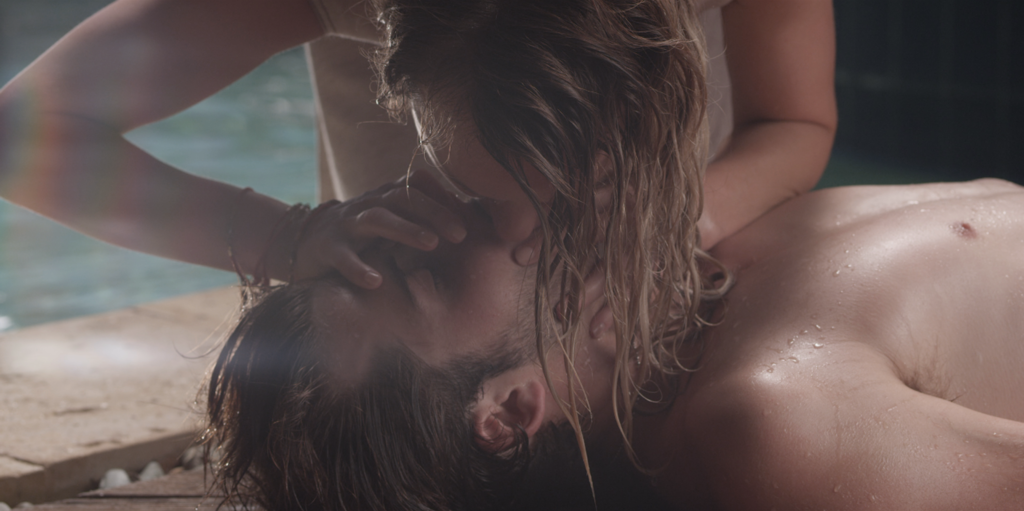
How did you come up with the film’s pulpy-sounding title?
It’s from a particularly explicit moment in Bataille’s Story of the Eye […] and also said in a voiceover from The Ten Commandments [Cecil B DeMille, 1956]. The title is immediate and fun, in a neo-Sirkian[4]Referring to the work of filmmaker Douglas Sirk. way – like a [Rainer Werner] Fassbinder or [Pedro] Almodóvar film title or something.
The French New Wave (or Nouvelle Vague) is another overt influence on Burning Kiss. How did this particular movement inspire you, and who are some other filmmakers who have influenced you?
There’s something incredibly exciting about the French New Wave and the other ‘new waves’ that were happening at the time in various countries. There was a tremendous sense of exploration in regard to the clichés and traditions of cinema. These films are concerned with deconstructing the form of film (editing, mise en scène, use of music, etc.), which of course inspired and liberated other filmmakers around them. Persona [1966], for example, certainly feels like [director Ingmar] Bergman’s response to the Nouvelle Vague. It’s an interest that seems to have fallen somewhat out of fashion these days.
From the Nouvelle Vague, directors I’m quite fond of include Claude Chabrol, with his ice-cold, contemplative approach to the [Alfred] Hitchcock style; [his films] have Hitchcockian plots, but the engine is different – almost anti-suspense. Other filmmakers I love are Mario Bava, [Federico] Fellini, Nicolas Roeg, Kenneth Anger, [Robert] Altman, [Martin] Scorsese, Ken Russell, [Stanley] Kubrick and Hitchcock himself.
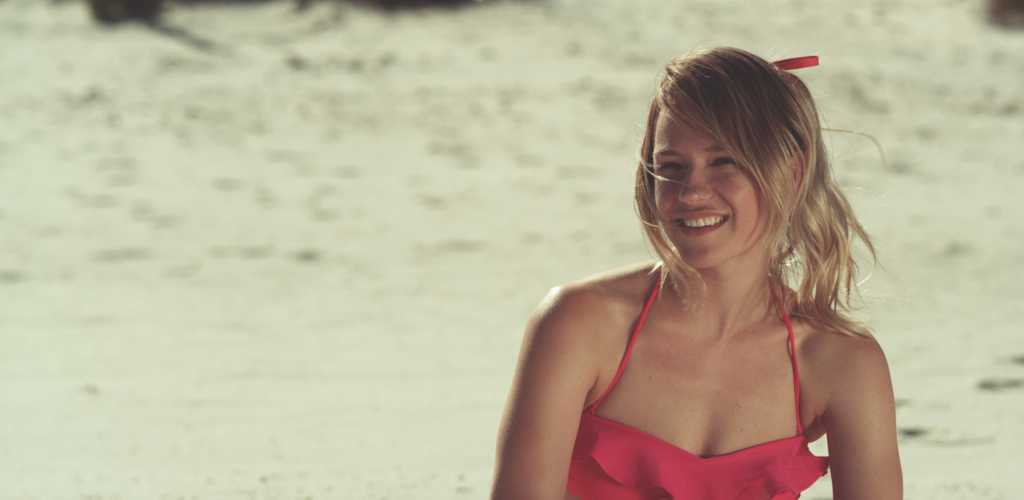
Surrealism plays a part in Burning Kiss, too; there’s a whiff of David Lynch to the proceedings.
David Lynch was definitely a big inspiration around the time I was developing the film. My favourites of his are Eraserhead [1977], Blue Velvet [1986] and Mulholland Drive [2001]. Lynch, of course, has such a recognisable style, and has introduced a new vocabulary into the noir tradition predicated on mood, mystery and extremity that, at its best, is irresistible.
I was also interested in the pop-art tradition and wanted to incorporate this stylistically into the film.
What, in your opinion, makes Australian filmmakers’ renditions of noir distinct from their counterparts in other countries ?
I think the Australian tradition seems to place a strong emphasis on masculinity and how crime functions as a kind of male rite of passage. Stylistically, it seems to favour kitchen-sink realism with wry humour over the more seductive and expressionistic elements of noir [made elsewhere].
And location is significant as well. What do you think Perth offers as a setting for the unfolding of this particular noir story?
Probably isolation and heat, which are wonderful metaphors for the neo-noir tradition. Perth is a relatively small city, with no neighbouring major cities, [and is located] in a state that is mostly desert – roughly the size of Texas and Alaska combined. It’s a picturesque city with beautiful weather, but it definitely has its own sunbaked weirdness and I think isolation is a fundamental part of the culture of the city.
But, in my film, I didn’t really represent Perth per se, nor is it mentioned at all; [the film is] more of a fantasy world.
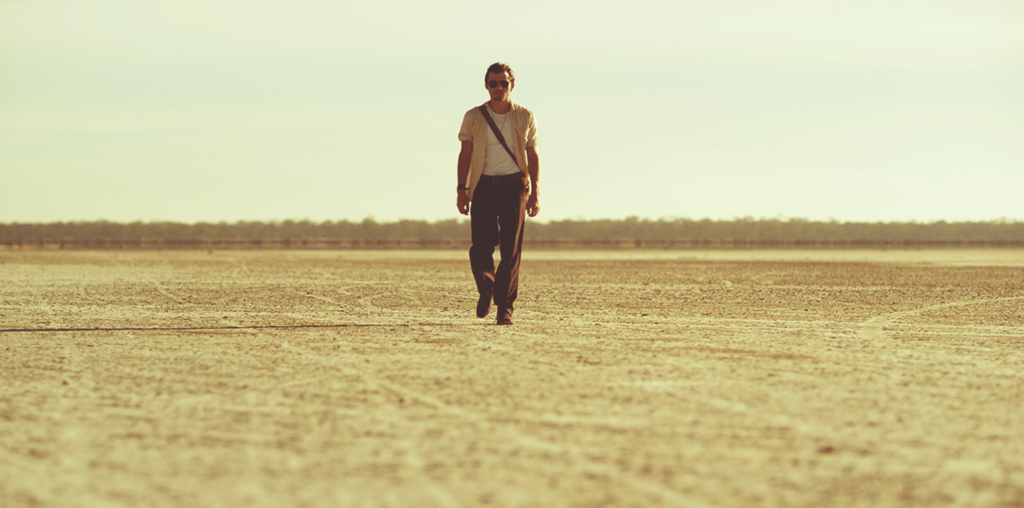
Burning Kiss is a very visceral viewing experience; while watching it, you can almost feel the heat. In some ways, it reminded me of Cat on a Hot Tin Roof (Richard Brooks, 1958) or Australia’s own Wake in Fright (Ted Kotcheff, 1971). How important was it for you to accomplish this atmosphere, and how did you go about achieving it?
Very important! I was reading lots of Bataille at the time of writing the film, and I was fascinated by his explorations of creating thematic links between the sun, the erotic and the dangerous. In film terms, there’s an opening to a film called Lady in a Cage [Walter Grauman, 1964] – it’s perhaps my favourite opening ever, [next to] the start of Blue Velvet – which automatically dials the viewer into an atmosphere of heat and danger. It was a big influence over me. The Southern Gothic tradition, of course, often deals with hot weather and forbidden repressed urges, so I drew from The Night of the Iguana [John Huston, 1964] and Suddenly, Last Summer [Joseph L Mankiewicz, 1959]. The photography of Weegee[5]Known for his black-and-white crime photography, Arthur ‘Weegee’ Fellig was a photojournalist who came into prominence during the 1930s and 1940s. He subsequently gained work in Hollywood, including as a special-photographic-effects consultant on Dr. Strangelove or: How I Learned to Stop Worrying and Love the Bomb (Kubrick, 1964). during New York heatwaves also has a kind of grotesque extremity that was inspiring [to me], as was the photographer Martin Parr.
To create the atmosphere cinematically was often quite complicated, and I learned lots about colour grades and adding sweat to skin. For the more extreme looks in the film, we used heat distortion by putting flames in front of the lens and adding them in post-production.
How challenging was it to achieve such specific stylistic flourishes on a tight budget?
Incredibly challenging! There is a saying in independent filmmaking: don’t show what you don’t have. Although we hopefully succeeded in making the film appear bigger than it is, we really considered what locations, lighting and props were achievable within the scope of the project to give the impression of a bigger budget. I worked very hard with collaborators such as [director of photography] Ivan Davidov and [visual-effects artist] Josh Weeks to push the limits of what we could do.
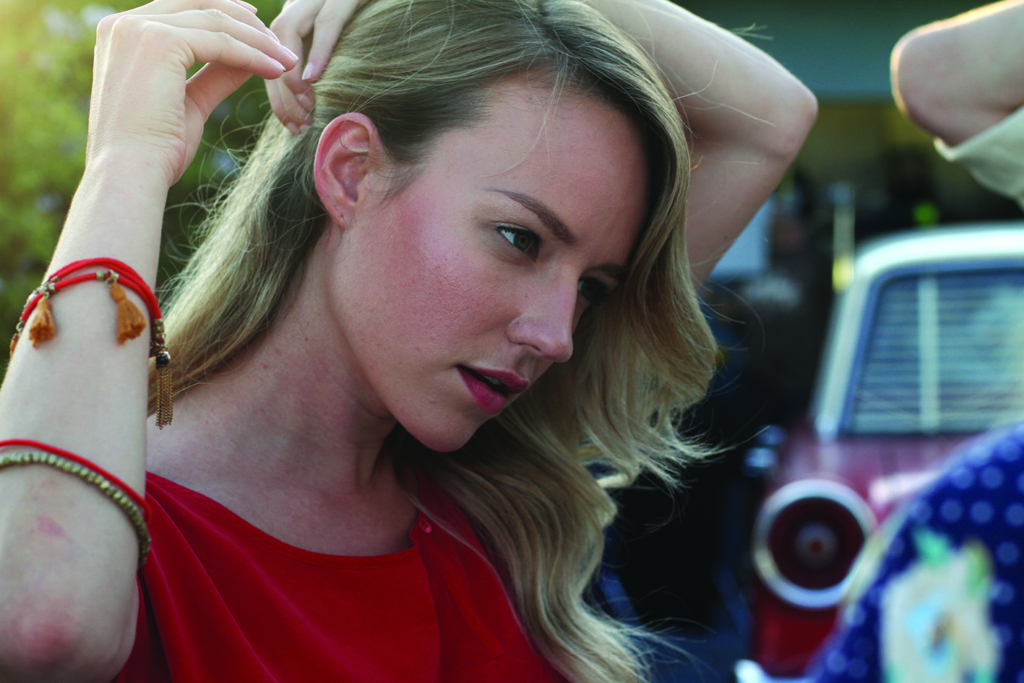
Could you tell us about the casting of the three primary characters? Why were the selected actors so right for their roles?
Liam had done another film [Sororal, Sam Barrett, 2014] that I had worked on [as co-writer], which was kind of in this Italian neo-giallo tradition; it was made in Perth, and he was the lead in that. For me, he looked a bit like John Phillip Law, the guy in Danger: Diabolik [Bava, 1968] and Barbarella [Roger Vadim, 1968]. I don’t know why, but that was some sort of incentive. I didn’t actually audition Liam; I just met up with him for a beer.
We found Alyson through auditioning – she was just the best. She came in and had really gone out of her way: she had sort of dressed up as her character, and had props, and just went that little bit extra […] I was really impressed by her performance. She had the toughest job because her character is the ‘axis’ of the film, and [has] the strongest arc.
Richard was [cast] through auditioning as well; he was an old hand around Perth and has done a lot of stage and stuff like that for a long time. He had the right presence: he was strong, charismatic, but at the same time [had] that kind of Australian humour. And he was accessible – if he was too dominating, he would have shut everything down […] He was perfect.

How have audiences responded to Burning Kiss?
I think people have been really intrigued by it. For an Australian film, they were kind of surprised and […] processing what they’d seen. I think, because there’s so much sex and unusual editing […] it kind of throws everything against the wall.
http://theburningkissmovie.com
Endnotes
| 1 | Referring to filmmaker Luis Buñuel. |
|---|---|
| 2 | Narrated retrospectively by an unnamed young man, Bataille’s 1928 novella concerns the unconventional sexual exploits of love-struck teenagers. |
| 3 | For a primer on the midnight movie, see Neil Strauss, ‘It Must Be Midnight and Must Be Weird’, The New York Times, 7 July 1995, <https://www.nytimes.com/1995/07/07/movies/it-must-be-midnight-and-must-be-weird.html>, accessed 21 May 2019. |
| 4 | Referring to the work of filmmaker Douglas Sirk. |
| 5 | Known for his black-and-white crime photography, Arthur ‘Weegee’ Fellig was a photojournalist who came into prominence during the 1930s and 1940s. He subsequently gained work in Hollywood, including as a special-photographic-effects consultant on Dr. Strangelove or: How I Learned to Stop Worrying and Love the Bomb (Kubrick, 1964). |
